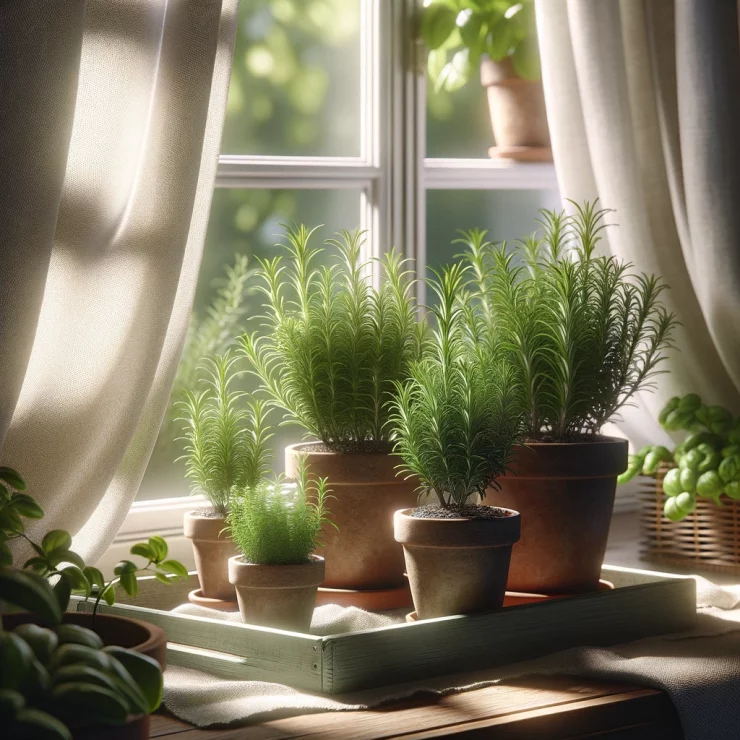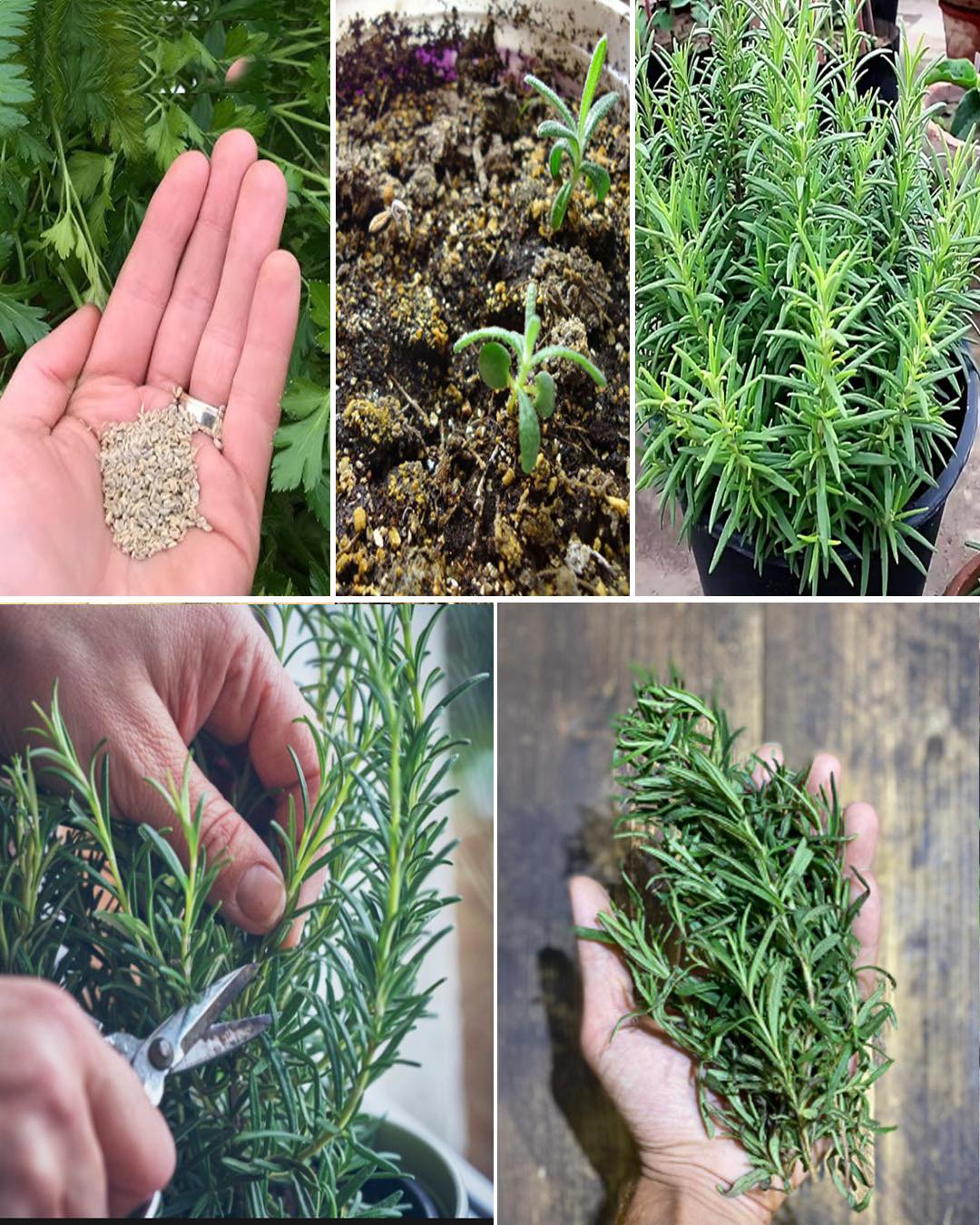Rosemary is a versatile herb that not only adds flavor to culinary dishes but also offers aromatic benefits and is known for its medicinal properties. While it thrives in Mediterranean climates, with a little care and attention, you can successfully grow rosemary indoors, even if you don’t have a garden. Container gardening allows you to cultivate this fragrant herb year-round, ensuring a fresh supply of rosemary for your kitchen. In this guide, we’ll take you through the steps to grow rosemary from seed to spice right in the comfort of your home.

Choosing the Right Container:
Selecting the appropriate container is the first step in successfully growing rosemary indoors. Opt for a container with good drainage to prevent waterlogging, as rosemary prefers well-draining soil. A terracotta or clay pot is ideal as it allows excess moisture to evaporate. Ensure that the container is at least 12 inches deep to accommodate the long roots of the rosemary plant.
Preparing the Soil:
Rosemary thrives in a sandy, well-draining soil mix. You can create the perfect soil blend by mixing equal parts of potting soil, perlite, and coarse sand. This mixture not only provides excellent drainage but also mimics the natural conditions of rosemary’s native habitat. Fill the container with the soil mix, leaving about an inch of space from the rim to prevent water from overflowing when watering.
Planting Rosemary Seeds:
Sow rosemary seeds directly into the prepared soil, pressing them lightly into the surface. Rosemary seeds are small, so be careful not to bury them too deep. Cover the seeds with a thin layer of soil and water gently to settle the soil. Place the container in a sunny location, such as a south-facing window, where the plant will receive at least six to eight hours of sunlight per day.

Watering and Care:
Rosemary is drought-tolerant once established, so it’s essential not to overwater. Allow the soil to dry out slightly between waterings, and water only when the top inch of soil feels dry to the touch. Avoid wetting the foliage when watering, as this can promote fungal diseases. Fertilize the rosemary plant sparingly with a balanced liquid fertilizer diluted to half strength every four to six weeks during the growing season.
Pruning and Harvesting:
Regular pruning is essential to keep your indoor rosemary plant bushy and compact. Pinch off the top growth regularly to encourage lateral branching and a fuller plant. You can start harvesting rosemary leaves once the plant reaches about six inches in height. Use sharp scissors or pruning shears to snip off the stems as needed, but be sure not to remove more than one-third of the plant at a time to avoid stressing it.
Preserving Rosemary:
If you find yourself with an abundance of fresh rosemary, consider preserving it for future use. Rosemary can be dried, frozen, or infused into oils or vinegars. To dry rosemary, tie a bundle of stems together and hang them upside down in a warm, dry place with good air circulation. Once dry, strip the leaves from the stems and store them in an airtight container away from light and heat.
Growing rosemary indoors in containers is a rewarding experience that allows you to enjoy this flavorful herb year-round. With the right container, soil mix, and care, you can cultivate healthy rosemary plants that will provide a steady supply of fresh leaves for your culinary creations. Whether you’re a seasoned gardener or just starting out, give indoor rosemary gardening a try and elevate your dishes with the fresh, aromatic flavor of homegrown herbs.
News
JJ Redick reacts to Luka Doncic trade for Anthony Davis
In one of the most jaw-dropping moves of the season, the NBA landscape was rocked by the blockbuster trade involving Luka Dončić and Anthony Davis—a swap that has sent ripples of excitement, disbelief, and heated discussion through the league. Among…
Anthony Davis FULL reaction to trade to Mavericks for Luka Doncic
In a blockbuster move that sent shockwaves through the NBA and left fans reeling, Anthony Davis has been traded to the Dallas Mavericks in exchange for Luka Dončić. In the immediate aftermath of the news, Davis took to the media…
Shaq reacts to Dallas Mavericks wanting Kevin Durant after Luka-AD trade 👀
In the constantly shifting world of the NBA, trade rumors and blockbuster moves are a regular part of the season’s drama. The latest twist has fans buzzing: the Dallas Mavericks have reportedly set their sights on acquiring Kevin Durant in…
Donovan Mitchell FILTHY poster dunk on Kristaps Porzingis 😳
In a game filled with high-intensity moments and jaw-dropping highlights, one play in particular has left fans and analysts buzzing about Donovan Mitchell’s latest display of athleticism. Early in the contest, with the atmosphere already charged by an evenly matched…
Joel Embiid hits go-ahead bucket vs Mavs then chats with Anthony Davis after game
In one of the most thrilling contests of the season, Joel Embiid delivered a clutch performance against the Dallas Mavericks, punctuating the game with a go-ahead bucket that sent the home crowd into a frenzy. The atmosphere in the arena…
D’Angelo Russell game winner as Nets hit two 3’s in 3 seconds to win vs Rockets 😱
In one of the most electrifying moments in recent NBA history, D’Angelo Russell delivered an unforgettable game-winner that left fans and commentators in complete awe. With the Brooklyn Nets locked in a tense battle against the Houston Rockets, the outcome…
End of content
No more pages to load











